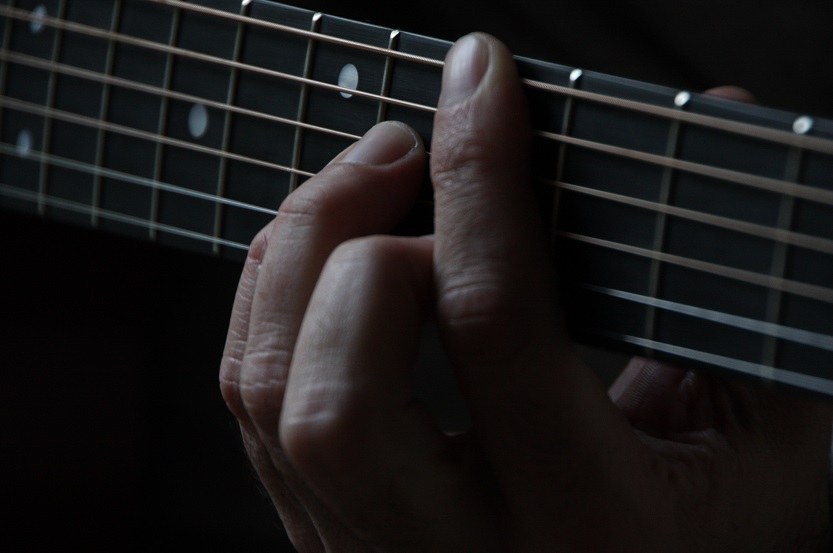
These 13 tools and tips for playing guitar with arthritis can help you immensely. It is no secret that arthritis can affect your guitar playing;
In this brief guide, we give you some tips on how to work around it as well as some tips on how to avoid it.
But what if you already have arthritis? Will playing make it worse?
Fortunately, there’s no evidence to suggest that playing guitar causes arthritis or makes it worse. In fact, playing the guitar can actually relieve the pain caused by arthritis!
Since arthritis affects everyone differently, there are no hard and fast rules for playing guitar with it. But here are some Tips for Playing Guitar with Arthritis that might help make your jam and practice sessions easier.
1. Create the Right Environment
Make sure that you warm-up and stretch your hand before playing the guitar. Pick a comfortable chair to sit in and try to play in a warm and dry room to reduce the effects of your arthritis.
2. Use a Capo
Full barre chords are not friends of arthritis, so try to stick to open chords if you can. A capo can help you avoid many barre chords without sacrificing the sound of your playing.
3. Play More Comfortably
Play slowly if your style allows for it, and try to keep your wrist straight. Also, keep your fingers as close to the fret as possible so you don’t need to apply as much pressure to the string.
4. Use a Thumb Pick
Guitar picks aren’t friends of arthritis either, so consider using a pick specifically designed for players with grip problems. Thumb picks can help you play longer and more painlessly.
5. Change Your Tuning
Experiment with tunings that allow you to use more open strings. We’ve put together a comprehensive guide on alternate tunings that could make your playing easier.
6. Use an Automatic Tuner
Tuning a guitar involves a lot of twisting, which isn’t great for arthritis. Use the Roadie 3 and let a robot do the heavy lifting for you so you can concentrate on your playing.
Roadie Coach
If you want to have the perfect tool for learning, check out the Roadie Coach app (Available on both iOS and Android). This is the first and only AI-based guitar, ukulele, and singing learning app that actually listens to you play and then provides customized feedback. Whether you’re working on chords, strumming patterns, rhythm, learn full songs on a step-by-step approach and access a huge library of 2000+ songs.
7. Use a Larger Neck
A larger guitar neck will make it easier for you to grip it and give your hand some rest. Common brands like the Les Paul will do the trick, and Zager Guitars are made for it.
8. Use Finger Caps
Silicone finger caps are designed for people with conditions like arthritis and can help alleviate the pain of pushing down on a string. Consider using them if they won’t impair your playing.
9. Lower the String Action
The string action, or height of the strings, affects how hard you have to push it down on the fret. Lower the strings so they’re closer to the fret and you don’t have to apply as much pressure.
10. Use Lighter Strings
Lighter strings require less pressure, which will be easier on your hands. Acoustic players should invest in steel or silk strings, and electric players should consider lighter gauge strings.
11. Stretch
Stretching is a must for anybody with arthritis or any similar issues. As a matter of fact, stretching can be the difference between an enjoyable playing experience and a painful one. Take at least 5 minutes before you play to do several hands, arm, back and even leg stretches.
12. Get a better guitar
Inexpensive guitars tend to be harder to play. That is a fact of life that we all have to deal with. As you’d expect, you get what you pay for. A professional guitar is easier on your hands, fingers and arms. Some even play like butter. On the other hand, cheap guitars make you more susceptible to injury.
13. Take breaks often
Practicing for two hours straight is not advisable. Not only does your body tire more, but your mind starts to lose focus before the first hour is completed.
Instead, try playing for 25 minutes at a time, then stop for five minutes. You can then repeat this until you accomplish what you set out to do in your practice session.
Back on the Road!
Unfortunately, there’s no cure for arthritis — but there are plenty of ways you can make your life easier. Hopefully, you’ve found these tools and tips for playing guitar with arthritis helpful.
Know of anything we missed in this post? Let us know in the comments below!


